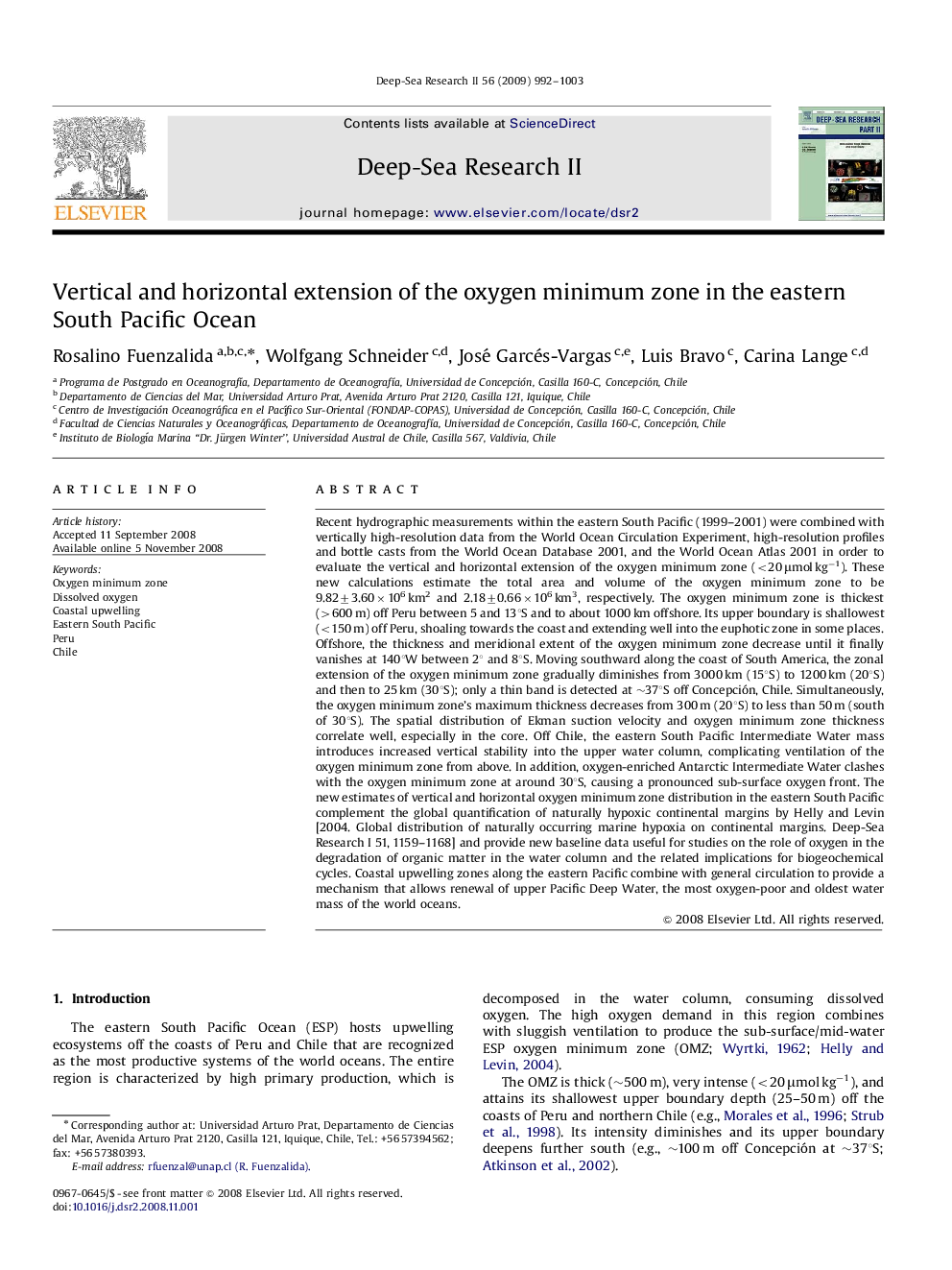| کد مقاله | کد نشریه | سال انتشار | مقاله انگلیسی | نسخه تمام متن |
|---|---|---|---|---|
| 4537424 | 1326369 | 2009 | 12 صفحه PDF | دانلود رایگان |

Recent hydrographic measurements within the eastern South Pacific (1999–2001) were combined with vertically high-resolution data from the World Ocean Circulation Experiment, high-resolution profiles and bottle casts from the World Ocean Database 2001, and the World Ocean Atlas 2001 in order to evaluate the vertical and horizontal extension of the oxygen minimum zone (<20 μmol kg−1). These new calculations estimate the total area and volume of the oxygen minimum zone to be 9.82±3.60×106 km2 and 2.18±0.66×106 km3, respectively. The oxygen minimum zone is thickest (>600 m) off Peru between 5 and 13°S and to about 1000 km offshore. Its upper boundary is shallowest (<150 m) off Peru, shoaling towards the coast and extending well into the euphotic zone in some places. Offshore, the thickness and meridional extent of the oxygen minimum zone decrease until it finally vanishes at 140°W between 2° and 8°S. Moving southward along the coast of South America, the zonal extension of the oxygen minimum zone gradually diminishes from 3000 km (15°S) to 1200 km (20°S) and then to 25 km (30°S); only a thin band is detected at ∼37°S off Concepción, Chile. Simultaneously, the oxygen minimum zone's maximum thickness decreases from 300 m (20°S) to less than 50 m (south of 30°S). The spatial distribution of Ekman suction velocity and oxygen minimum zone thickness correlate well, especially in the core. Off Chile, the eastern South Pacific Intermediate Water mass introduces increased vertical stability into the upper water column, complicating ventilation of the oxygen minimum zone from above. In addition, oxygen-enriched Antarctic Intermediate Water clashes with the oxygen minimum zone at around 30°S, causing a pronounced sub-surface oxygen front. The new estimates of vertical and horizontal oxygen minimum zone distribution in the eastern South Pacific complement the global quantification of naturally hypoxic continental margins by Helly and Levin [2004. Global distribution of naturally occurring marine hypoxia on continental margins. Deep-Sea Research I 51, 1159–1168] and provide new baseline data useful for studies on the role of oxygen in the degradation of organic matter in the water column and the related implications for biogeochemical cycles. Coastal upwelling zones along the eastern Pacific combine with general circulation to provide a mechanism that allows renewal of upper Pacific Deep Water, the most oxygen-poor and oldest water mass of the world oceans.
Journal: Deep Sea Research Part II: Topical Studies in Oceanography - Volume 56, Issue 16, 15 July 2009, Pages 992–1003